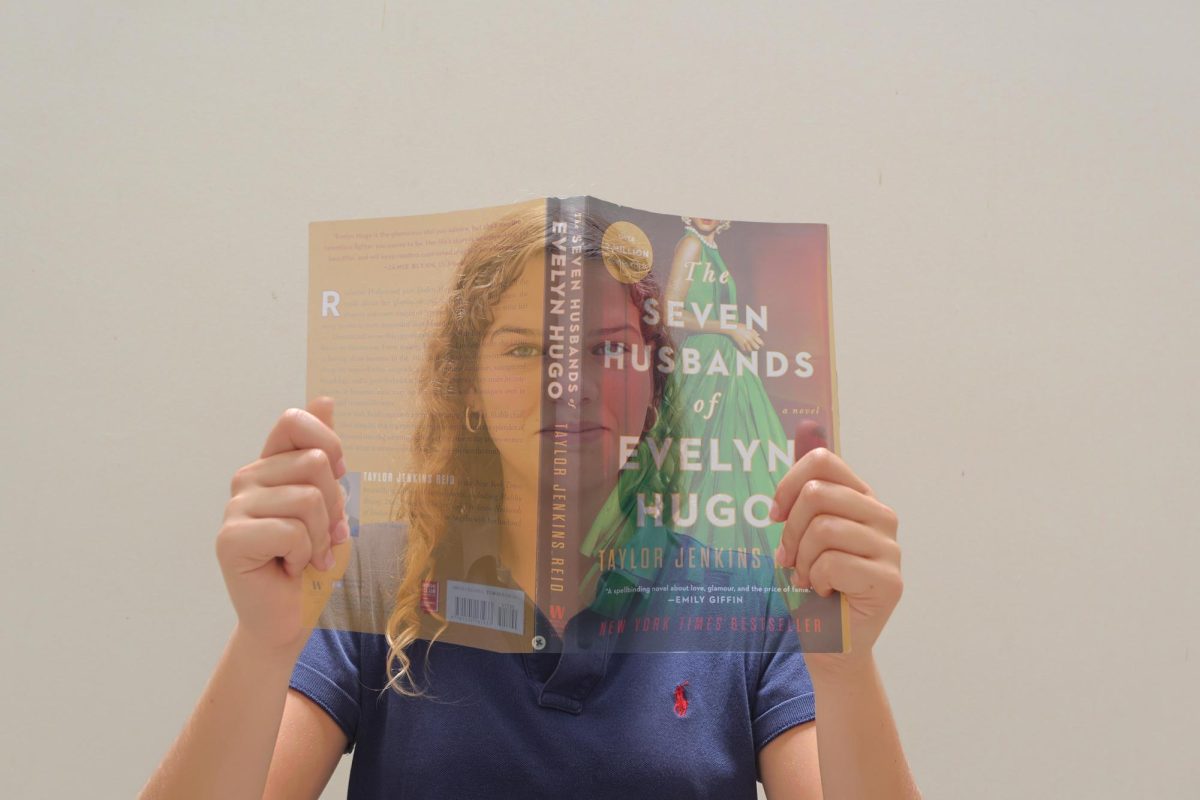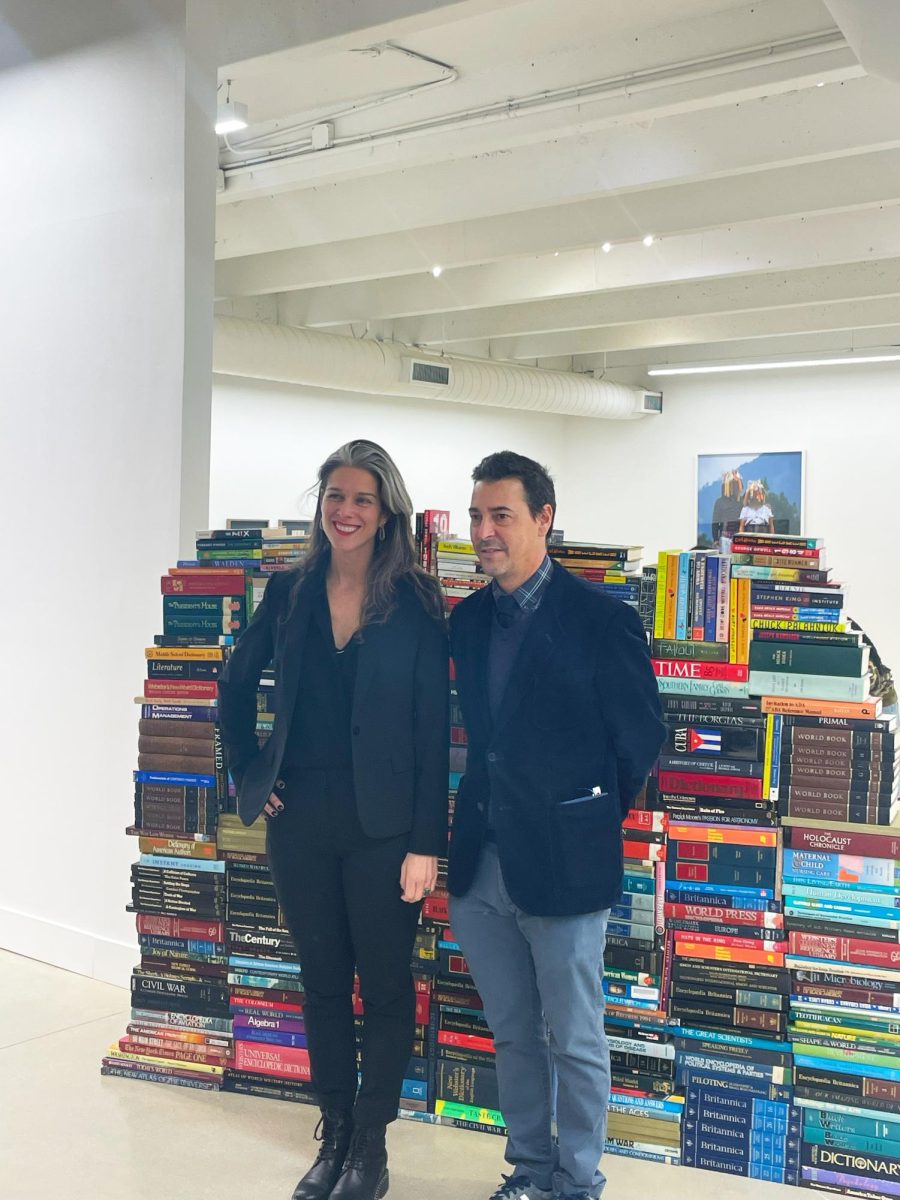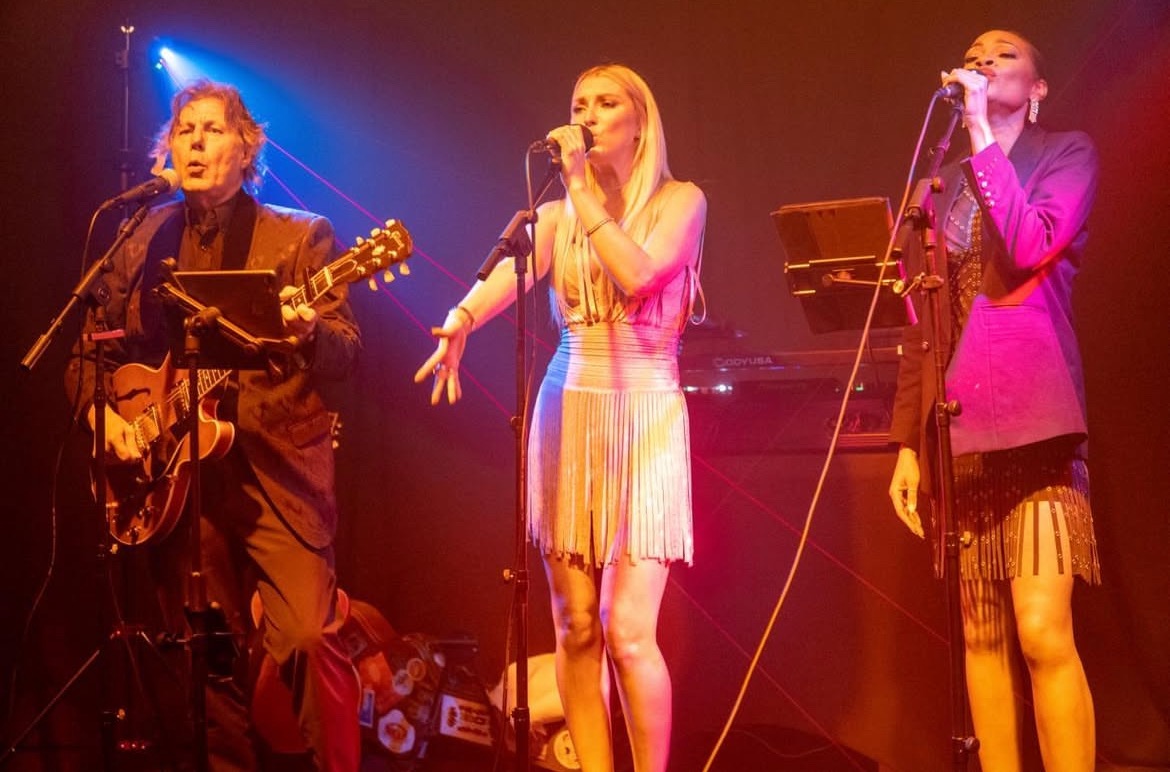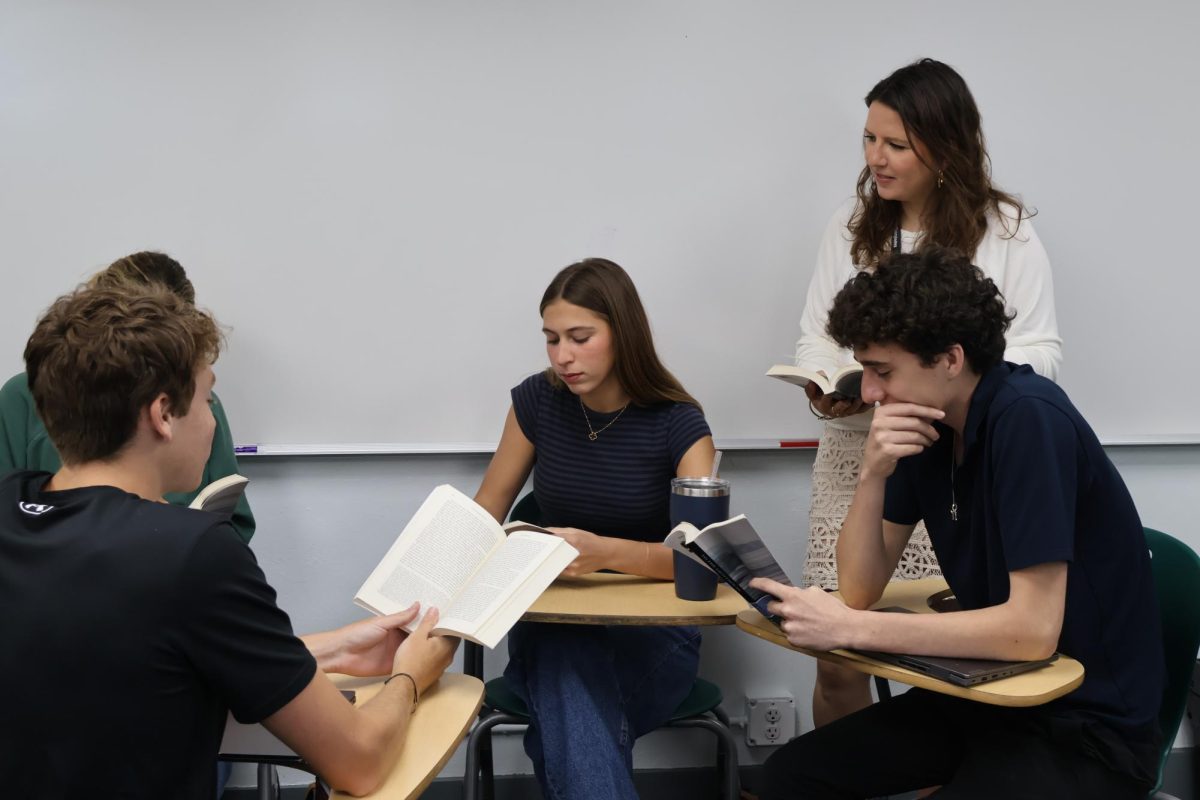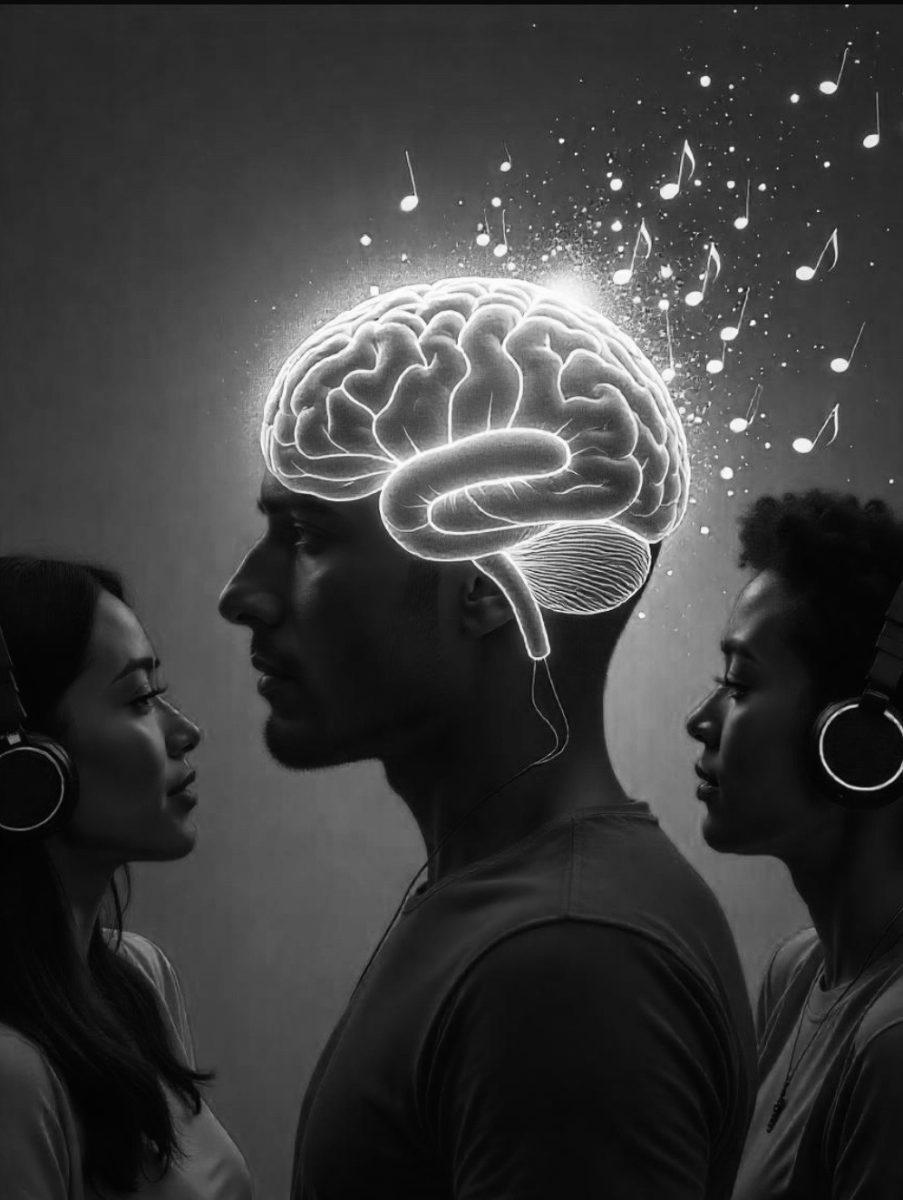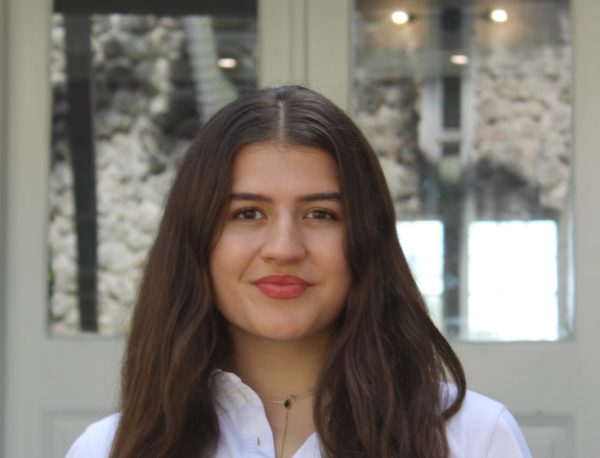Mark Handforth wants us to hear the bells. “The Ringing Rock” is a bright yellow sculpture that sits at the west entrance of the Ansin breezeway, next to the library. The sculpture’s plaque contains a quote by Walt Whitman, a poet well established in every student’s English curriculum at RE, which reads, “And I know I am solid and sound, / To me the converging objects of the universe perpetually flow, / All are written to me, and I must get what the writing means.” Below, the plaque has a dedication: “For you, the students.” Handforth made this sculpture for Ransom Everglades, the school that his daughters Violet Handforth ’18 and Cherry Handforth ’21 both attended. But it’s also a piece that reflects the core sensibility that has defined his long, illustrious career.
Before he moved to Miami in the ’90s, Handforth was born in Hong Kong in 1969 and grew up in London. He was drawn to art from an early age. “I was always drawing when I was quite young, and my mom was really quite keen on me being an artist,” he said. “As a kid at school I did a lot of art, and I suppose I just got kind of hooked.”
Handforth’s work draws from Surrealism, Dadaism, and urban streetscapes. Before moving to Miami with his artist and filmmaker wife, Dara Friedman, he studied at the Slade School of Fine Art in London and Städelschule in Frankfurt, Germany. “Dara brought me to Miami,” Handforth said. “We had been at art school in London, and we finished art school, and we were totally broke, and it was really cold, and Dara was like, ‘Let’s just go to Miami.’”
He laughed. “It was very spontaneous,” he added. “I didn’t think we were going to stay. I thought we were taking a trip. She wanted to make a film, and it was kind of the early days in Miami, and it was very cinematic.”
Those “early days” in Miami ended up being full of opportunities. “Miami’s a great place to begin things and try things out,” Handforth explained. “Obviously, there is a bigger art scene in London, but Miami has a real quality. You can do a lot here. There’s a lot that’s achievable, and if you do something, people will come and look, and people will pay attention, they will give you a chance.”
Handforth’s works are “meetings in space” that offer new perspectives on familiar objects, such as street lamps, traffic signs, and telephones, through unexpected transformations. His sculptures often feature contorted forms, which are contrasted by graceful craftsmanship.
“I started to really like the idea of, instead of making a picture of the world, to almost engage with the world. I felt like sculpture kind of existed on the world’s terms,” Handforth explained.
His work is in the collections of several major international institutions, including the Dallas Museum of Art, Carnegie Museum of Art, Museo Jumex, and the Whitney Museum of American Art. When describing his artistic process, Handforth said, “One thing I do all the time is have my eyes wide open, my ears wide open, and I’m constantly looking at things. Anything I see that I find remotely interesting, I’ll write down or photograph or draw. I’m constantly working through relationships in the world, particularly the kind of in the city and the landscape around me. I think: How does this relate? How do these colors relate?”
Handforth has been a part of the Ransom Everglades community for over a decade. He joined the community when his eldest daughter Violet began attending RE and remained active when his youngest daughter Cherry followed in her older sister’s footsteps. “Ransom really opened them up and let them become who they are,” Handforth said.
“The Ringing Rock” came to be after Handforth’s friend, RE board member Rudy Touzet, approached him with the idea of making a sculpture for the revamped quad the school was building outside the new Fernandez STEM Center.
“I wanted it to be a sculpture that’s for the students and that the students could use. That would be part of their life. That wouldn’t be some kind of monument sitting there. It would be something else.”
Handforth explained that his intention was to create something that was both “part of nature” and also “part of the life of the school”—evoking RE’s own connections to the natural environment. “The rock somehow relates very much to the nature of this campus. It’s this beautiful, lush nature,” he said. At the same time, he described the ring as a formal element that is both minimalistic and inorganic, contrasting the nature surrounding it. “I like that kind of strange place where the industrial meets the organic. There’s something jarring about that, and there’s something beautiful about that. I see that meeting as a beautiful thing,” he said.
Why a bell? “I was going to create both a kind of sound and a kind of performative element, because I wanted the sculpture to just spread,” he explained. “I think, with a lot of my sculptures, I want the sculpture to reach out into the rest of the world. And so, with the bell, the noise would spread, the action would spread, and I hoped that it would become this thing that kids would do. [I hoped it would] become part of the life of the school so that the sculpture becomes bigger than itself.”
Although the sculpture is by now a familiar fixture of the Touzet Quad, students still find themselves stopping and contemplating it. “I personally love the sculpture because it livens up our school. I wish the bell was used more often. The concept of it is very cool,” said Luna Molla ’25.
“The bright yellow piece stands out in the vegetation. It’s quite beautiful to look at,” added Leo Heisel ’26.



